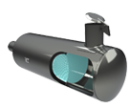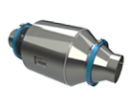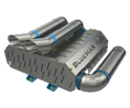Check our M-Series (Metallic) and D-Series (Ceramic) catalytic converters designed especially for diesel engines…
How Can We Control Diesel Emissions?
Diesel emissions are controlled either at their very source, through engine design and modifications, or by exhaust gas aftertreatment. The two approaches are in fact complementary and are followed simultaneously in real life.
There are two groups of diesel exhaust aftertreatment devices: diesel traps and diesel catalysts. Diesel traps, which are primarily diesel filters, control diesel particulate matter emissions by physically trapping the particulates.
The major challenge in the design of diesel filter system is to regenerate the trap from collected particulate matter in a reliable and cost-effective manner. So far diesel filters are used commercially only in a few specialized diesel engine applications.
Diesel catalysts control emissions by promoting chemical changes in the exhaust gas. They are most effective towards the gaseous emissions, i.e., hydrocarbons and carbon monoxide. Modern diesel catalysts are also becomming more and more effective in controlling diesel particulate matter. Diesel catalysts have been commercially used for many over-the-road and off-highway applications.
Nett Technologies’ Diesel Oxidation Catalysts (DOC)

Nett Technologies’ Diesel Particulate Filters (DPF)
Manufactured using either Cordierite or Silicon Carbide substrates, DPFs are an effective solution to Diesel…

Nett Technologies’ Selective Catalytic Reduction (SCR) Systems
Designed to control the emissions of Nitrogen Oxides (NOx) from medium to heavy duty diesel…

Request A Quote
Photo Gallery

